#Event Photography San Francisco
Text
The Importance of Backgrounds in Event Photography

In the realm of event photography, every detail counts in creating the perfect picture, but one aspect that often gets less attention is the background. Backgrounds in event photography are not just mere backdrops; they play a pivotal role in how the final image turns out. From capturing the venue's ambiance to highlighting the moment's emotions, a well-chosen background can immensely enhance the impact of a photograph. This article will explore the significance of backgrounds in event photography and provide insights on how to make the most of them.
Setting the Scene and Mood
The background in a photograph plays a crucial role in creating the atmosphere and feelings associated with the picture. It can transport the viewer to the heart of the event, whether it's a fancy ballroom, a cozy beachside spot, or a busy cityscape. A good background should work together with the photo's main subject without being too overwhelming. It gives viewers a sense of where and when the photo was taken.
Enhancing the Event's Theme
Backgrounds are like supporting actors in a play, essential for bringing out the theme or mood of an event. Whether it's a corporate gathering, a wedding celebration, or a birthday party, selecting the right background can help emphasize the event's theme and make it more visually appealing. It's like adding decorations to a cake; it makes the event look even better and helps tell its story to those who see the photo.
Avoiding Distractions
One of the challenges that event photography in San Francisco and other places face is avoiding things in the background that might take attention away from the main subject. Backgrounds filled with clutter or too much going on can make the photo less impactful. Skilled photographers know how to position themselves and choose angles that minimize these distractions, ensuring that the focus remains on what matters most in the picture. It's like keeping the stage clear so the main actor can shine.
Creating Depth and Dimension
Backgrounds have a special power—they can make photos look deeper and more interesting. When a background has depth, it's like adding layers to a picture, making it more engaging and giving it a 3D effect. Imagine a photo of a bustling street with lots of people and buildings in the background. It's not just a flat picture; it feels like you can step into it because of the layers created by the background. This is like how a pop-up book has different layers that make it look more exciting and real. So, backgrounds can make photos pop and come to life by adding this kind of depth and dimension.
In the end, if you are looking for "event photographers near me," you need to ensure that your photographer is well-versed with all of the above techniques.
Putting Together
Backgrounds are an essential element in event photography. They contribute significantly to setting the tone, conveying the theme, and ensuring the focus is on the main subject. For events, choosing a photographer who understands the importance of backgrounds is crucial. Slava Blazer Photography, with its expertise in bay area event Photography, ensures that every aspect of your event is captured beautifully, with backgrounds that complement and enhance every moment. Their attention to detail and ability to capture the essence of your event make them an excellent choice for those seeking a memorable and visually stunning photographic experience. To know more about them, visit Slavablazer.com.
#Bay Area Event Photographers#Bay Area Event Photography#Event Photographer Near Me#Event Photography San Francisco#San Francisco Professional Event Photography
0 notes
Text

Have one of my self-portraits (Radiant) is in a group show, Showstoppers at 2358MRKT Gallery in San Francisco. The show opens on Friday (August 30, 2024) and has a whopping 67 Bay Area artists.


This is the only photo (out of 18 across three cameras) that was actually successful at capturing the stained-glass-like lighting I was playing with.
Opening Reception
Friday, August 30
6-9pm
Castro Art Walk
Friday, September 6
5-8pm
Closing Reception
Saturday, September 28
6-9pm
#san francisco#art show#group show#art exhibition#artists on tumblr#photography#fine art photography#analog#analog photography#film photography#film photograhers#self portrait#self portrature#portrait#portrait photography#colorful#colorful art#experimental photography#lensblr#photographers on tumblr#original art#my art#photographer#art event#unedited
0 notes
Text
Why Choose Aura Photography for Your Event in San Francisco?
Capture the unseen energy of your guests with aura photography at your San Francisco event. This unique and memorable experience offers personalized insights, creating lasting impressions and conversation starters. Enhance your gathering with vibrant aura portraits, blending entertainment with a touch of mystique. Choose The Aura Journey for an unforgettable, energy-filled celebration.

#aura photography san francisco#aura photography#photography#aura#aura photography los angeles ca#aura photography for events
1 note
·
View note
Text

This is a photo that I took at a SF Giants game of a player warming up ⚾️
#photographer#photography#baseball#sports#giants#sf#san Francisco#bay area#game#event#live#catcher#MLB#action#action shot#vibe#asthetic
0 notes
Text
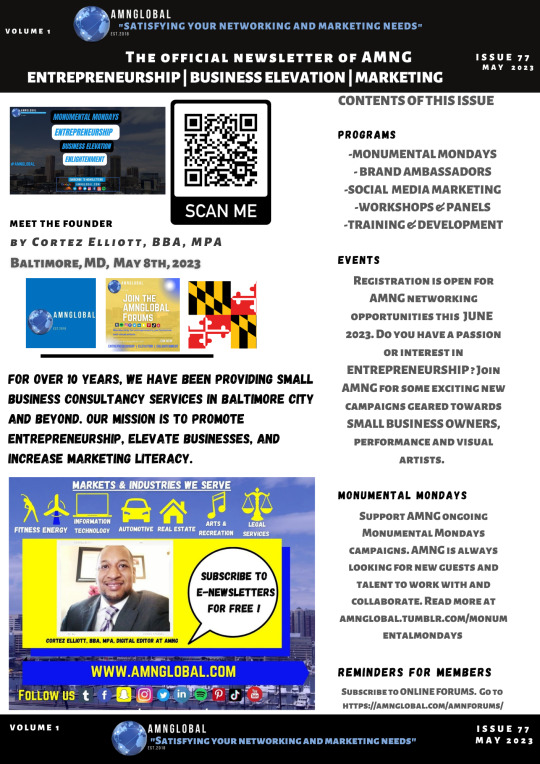
FYI | Don't miss out on the latest edition of Monumental Mondays! Be sure to preview Volume 1, Issue 77 and stay up-to-date on the latest news, insights, and trends in your industry. To get your hands on a digital copy, simply scan the QR code provided and start reading today!
Want to learn more about entrepreneurship, marketing and small business support services? Join our mailing list! Read & discuss the latest business topics - members get access to the weekly Monumental Mondays newsletter & enjoy exclusive new content and invitations to programming ! Scan QR code for more.
VOLUME 1. ISSUE 77 ( DOWNLOAD)
WEBSITE
CONTRIBUTOR GUIDELINES
If you aren’t a member yet, what’s stopping you? Find membership info⤵️ https://t.co/ACHJ0QCYvo The @amngforums membership submission form is back online! Make sure to renew your membership for 2023-2024 or become a new member! Subscribers are #FREE to join. Read more.
5 benefits of reading and subscribing to the Monumental Mondays newsletter:
Stay informed: With Monumental Mondays, you'll get access to the latest news, insights, and trends in your industry, helping you stay ahead of the curve and make informed decisions.
Save time: Instead of scouring the internet for the latest industry updates, Monumental Mondays brings them right to your inbox, saving you time and effort. Learn from experts: The newsletter is written by contributors who have their finger on the pulse of the latest developments, so you can learn from their knowledge, insights and experience.
Networking opportunities: Monumental Mondays provides a platform for you to connect with like-minded professionals and expand your network, opening up new opportunities for collaboration and growth.
Exclusive content: As a subscriber, you'll get access to exclusive content that isn't available anywhere else, giving you a competitive edge in your industry.
AMNG supports the growth, innovation, and activities of entrepreneurs, startup founders, small business owners, and performance and visual artists by offering guidance, marketing and entrepreneurship techniques, and project support of our partners to help them succeed. Our goal is to help our members by providing management resources and expert industry advice every Monday resulting in a reduction of risks and an avoidance of the pitfalls of making costly business decisions.
#baltimore#maryland#media#arts#monumentalmondays#amnglobal#marketing#photography#mississippi#san francisco#boston#south dakota#events#eastbaltimore#silverspringmaryland#annapolismaryland#bowiemaryland#croftonmaryland#ellicottcity#severnmaryland#oaklandmaryland
0 notes
Text


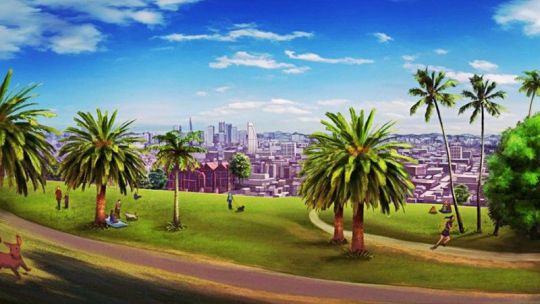

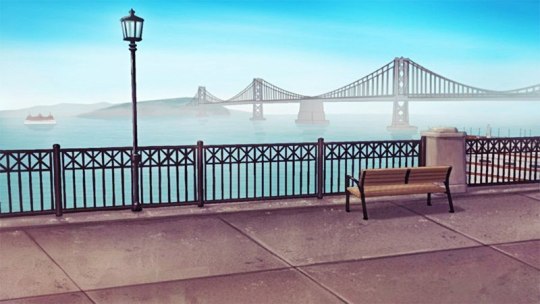

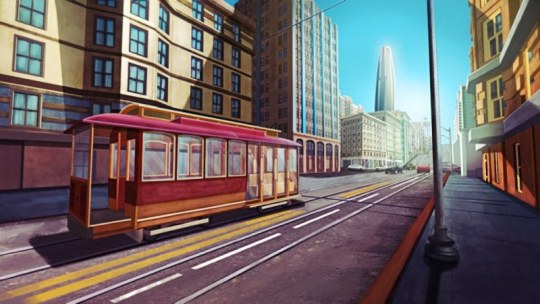


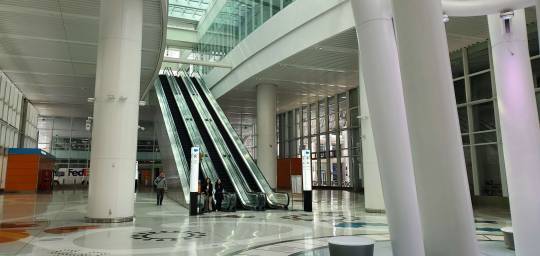
Lovestruck in-game VS real life photography, San Francisco as seen in Villainous Nights and other series.
Union Square
Events take place here and there's an ice skating rink in the winter months. The ice skating rink scene from Duke's route is one of my favorites. And iirc, he also proposed here to the MC.
333 Post St. San Francisco, CA 94108
Dolores Park
A lot of characters had scenes here! I still remember the scene that took place at night, where Andi took off her mask to kiss MC. (Ok, but the one that killed me the most was that scene with young Renzei from Razi's route.) From this park you can get a very good view of the San Francisco skyline.
Dolores St &, 19th St, San Francisco, CA 94114
Bay View
Another popular spot for scenes in the series. The best view is at Pier 7 along the Embarcadero. You'll see the iconic lamp posts and benches. There was a heart felt scene that took place here from Renzei's route at nighttime.
Pier 7, The Embarcadero. San Francisco, CA 94199
Downtown
I couldn't get the exact location like the one in-game, but there's a really nice similar spot at the intersection of Powell St and California St that a lot of photographers go to because it's up a big hill. If you stand in the middle of the crosswalk on Powell you can get a good view of the city. Instead of Optimus tower, you'll see the iconic triangle shape Transamerica tower.
intersection of Powell St and California St
Optimus
The tower which Optimus is inspired by is actually the Salesforce Tower. You can walk around the plaza and transit center nearby, but obviously can't go up to the offices. But, I'm guessing the design of Optimus' interior might have been inspired by the Salesforce transit center.
425 Mission St, San Francisco, CA 94105
48 notes
·
View notes
Text

Some good news..
18TH ANNUAL BLACK AND WHITE SPIDER AWARDS HONORS PHOTOGRAPHER KOEN VAN DAMME FROM BELGIUM
LOS ANGELES NOVEMBER 22, 2023 - Professional photographer Koen Van Damme of Belgium was presented with the 18th Annual Black and White Spider Awards 2nd Place - Merit of Excellence in the category of Architectural at a prestigious Nomination & Winners Photoshow streamed Saturday, November 18, 2023.
The live online gala was attended by industry leaders and the photography community from around the globe who logged on to watch the climax of the world’s premier event for black and white photography. 18th Annual Jury members included captains of the industry from Phillips, London; Flatland Gallery, Amsterdam; David & Goliath, Los Angeles; San Francisco Museum of Modern Art; Saatchi & Saatchi, London; Portuguese Center of Photography, Porto; Jason McCoy Gallery, New York; Hulsbosch, Sydney; Willas Contemporary, Stockholm; FCB Global, New York; ADK Creative One Inc., Tokyo; The ArtFactory Club, Vienna; Silvan Faessler Fine Art, Switzerland; Goldsmiths, University of London; Alfred Ehrhardt Foundation, Berlin; DDB Canada, Edmonton; Galleria Valeria Bella, Milan; David Clarke, London; Chiara Badinella, Art Advisory & Appraisals, Milan; Goodby Silverstein & Partners, San Francisco; Grey Group, New York; and Galerie Bugada Cargnel in Paris who honored Spider Fellows with 612 coveted title awards and 561 nominees in 33 categories.
“This year we saw another outstanding set of entries sparking some really fresh ideas, and making it very hard to select winners.” Commented Marcel Wijnen, Creative Director, Hulsbosch, Sydney.
“Once again the Black & White Spider Awards has delivered a range of excellent winners in both the Professional and Amateur categories. There are a number of truly amazing images - not only the winners but also those with Honorable Mention. As a judge it was a challenge to select from so many strong submissions. Added Conrad Hechter, Correspondent, Goldsmiths, University of London.
“It’s an incredible achievement to be selected among the best form the 6,193 entries from 69 countries we received this year” said Basil O’Brien, the awards Creative Director. “Koen Van Damme’s “Care center”, an exceptional image entered in the Architectural category, represents black and white photography at its finest, and we’re pleased to present him with the title of Merit of Excellence.”
BLACK AND WHITE SPIDER AWARDS is the leading international award honoring excellence in black and white photography. This celebrated event shines a spotlight on the best professional and amateur photographers worldwide and honors the finest images with the highest achievements in black and white photography. www.thespiderawards.com
6 notes
·
View notes
Text
A.C.T.’s 2nd Annual All Hallows’ Gala: Zombie Ball 2023
American Conservatory Theater (A.C.T.) and gala co-chairs Heather Stallings Little & John Little and David Jones & Joe D’Alessandro hosted Zombie Ball, the second annual All Hallows’ Gala that was held on Friday, October 27 at San Francisco’s August Hall. Hailed as San Francisco’s best costume party fundraiser, the All Hallows’ Gala Zombie Ball presented guests with a frightfully elegant and theatrical night full of fun, gourmet food and wine, and dancing and games. The evening is the sole annual fundraising event for A.C.T., providing essential funds for the theater’s artistic, actor training, and education and community programs. Guests at this year’s Zombie Ball were encouraged to dress in costume or cocktail attire.
The wonderfully frightening evening began with a cocktail reception where guests enjoyed live music and conversation on the mezzanine, or escaped to the “scream-easy” for a luxe respite. Guests were ushered to the historic music hall and treated to an autumnal-inspired menu created by Gold Leaf Catering. Afterwards, A.C.T. Young Conservatory alum and award-winning stage, screen, and music recording artist Darren Criss (American Buffalo, Hedwig and the Angry Inch, American Crime Story: The Assassination of Gianni Versace, Glee) regaled guests with some thrilling, Halloween-themed programming! Capping off the festive evening was the After-Life Party, featuring ultimate dance band Vinyl Project and the opportunity to play retro-games in the cool underground haunt, which included bowling, hoops, skee-ball, and late-night bites, tricks, and treats. Gala special guest Darren Criss joined the band on vocals and guitar, treating guests to an impromptu mini-concert!

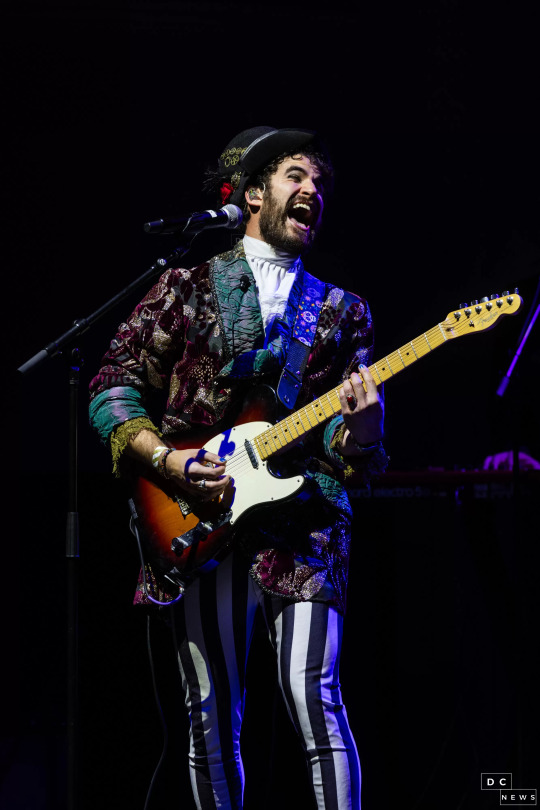
[UHQ] Darren Criss and Jomar Tagatac at A.C.T.'s 2nd Annual All Hallows' Gala: Zombie Ball 2023 on October 27th, 2023 (Photo by Drew Altizer Photography)
15 notes
·
View notes
Text










📌 MODEFA SF 2024
African Arts Academy Presents SF MODEFA & JUNETEENTH 2024
San Francisco Modern Ethnic Fashion Show Gala, Juneteenth, International Ethnic Day celebration, fashion, art, live music, food, and more.
Production: Fely Tchaco
Designers: Scott Brexton, Dench Studio, Tom Basler, Fely Tchaco
Creative Director and Co Host : Miae Nelson, @helen_victoria_blossom
Show Facilitator : GM Damo
Models : Cesar Medina, Helen Blosson, Nayana Vishva, Helena_that_model @yourlivefit @aamasterfit
Photography: David Perea David Perea Freelance Photography - Abstract Art
#fashionshow #fashionphotography #artoftheday #photooftheday #photographer #fashion #california #runway #style #show #event #dresses #moda
3 notes
·
View notes
Photo



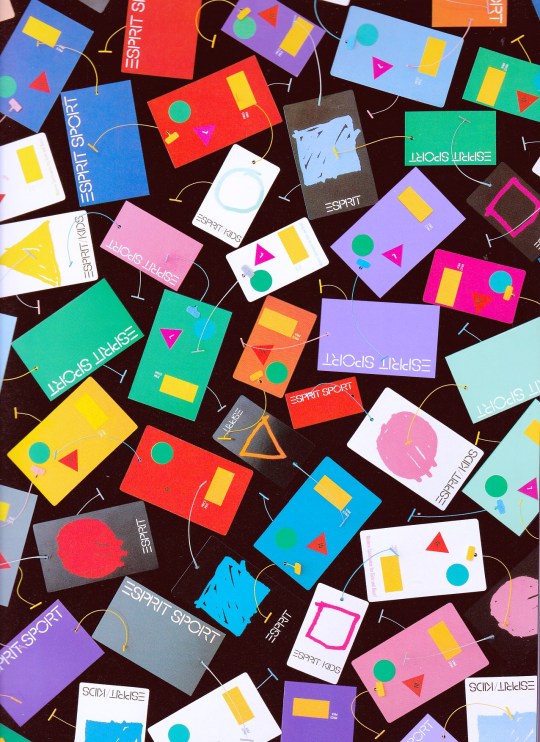
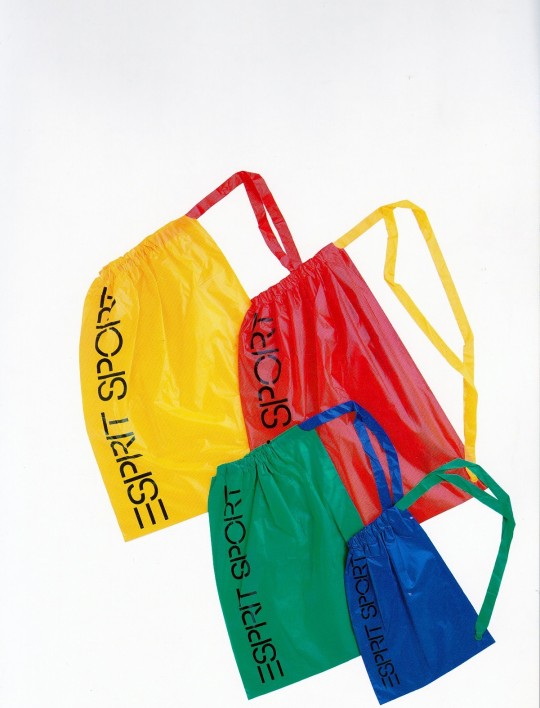

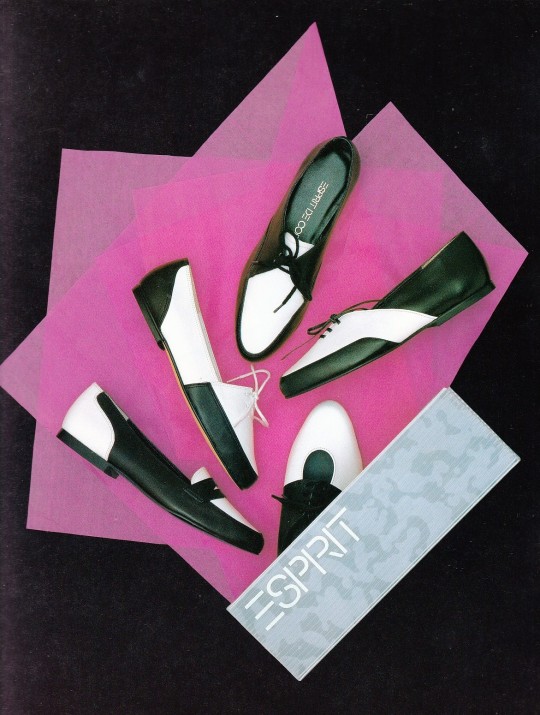



Esprit’s Graphic Work 1984-1986
Julie Silber
Photography by Roberto Carra and Oliviero Toscani, Book design by Tamotsu Yagi
Esprit, San Francisco 1987, unpaged, approx 250p , 25×37 cm, ISBN 9780961443726
euro 280,00
email if you want to buy :[email protected]
Incredibly rare and iconic, award-winning book published by Esprit De Corp in 1987, designed by Japanese designer and ESPRIT art director Tamotsu Yagi and Roberto Carra (Fiorucci), with photographer Oliviero Toscani (Benetton, Fiorucci, Colors). Housed in it's original printed plastic sleeve, this first and only die-cut cover edition showcases all aspects of the design work of the pioneering Californian fashion company, ESPRIT, from the years 1984-1986. Through it's wonderful, quintessentially Californian 1980's post-modern design, this book profiles ESPRIT's product packaging, clothing and home-ware design, pop accessories, catalogue campaigns, advertisements, various identity and event collateral (party announcements , posters, flyers, business cards), apparel print graphics, and retail interior design by Ettore Sottsass and Sottsass Associates one-of-a-kind, visually dazzling book and a wonderful, rare piece of commercial design history that led ESPRIT and Tamotsu Yagi to win the AIGA design leadership award in 1986.
In 1968, American environmentalist, adventure film-maker, conservationist and founder of The North Face outdoor clothing company, Douglas Tompkins, his wife Susie, and her friend Jane Tise began selling girl's dresses out of the back of a VW bus. In 1971, they incorporated the booming business under the name "Plain Jane" which later became ESPRIT, one of the hottest and most successful clothing companies of the 1970's, 1980's and 1990's.From the early days running out of the Tompkins' apartment in San Francisco, Douglas Tompkins titled himself "image director", overseeing all aspects of the company's image, from store design to catalog layout, while his wife served as design director. In 1984 the role of art director was taken up by Japanese designer Tamotsu Yagi. All facets of design were of primary importance to ESPRIT. From the iconic logo design by John Casado (who aslo designed the first Apple Macintosh Computer logo and album covers for the Doobie Brothers) to the ESPRIT store and office interiors by Ettore Sottsass (of Memphis Design Group and Sottsass Associates) to the fashion campaign photography of Oliviero Toscani (also well-known for his controversial campaigns for Benetton, work with Fiorucci, and co-founder of Colors magazine), ESPRIT was a total design vision of the 1980's .
15/01/23
orders to: [email protected]
ordini a: [email protected]
twitter: @fashionbooksmi
instagram: fashionbooksmilano, designbooksmilano tumblr: fashionbooksmilano, designbooksmilano
#Esprit#1984-1985#Oliviero Toscani#Roberto Carra#Tamotsu Yagi#eighties fashion#rare books#graphic design books#fashion books#designbooksmilano#fashionbooksmilano
47 notes
·
View notes
Text
The Benefits of Hiring a Professional Real Estate Photographer
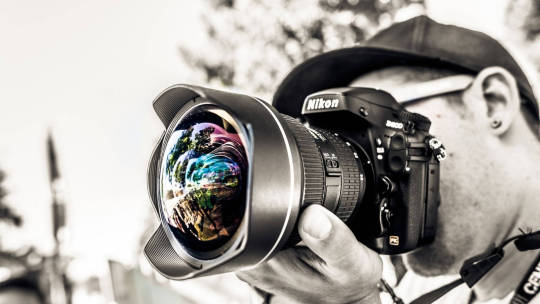
The ability to distinguish from the competition is crucial in today's highly competitive real estate market. That's where a professional real estate photographer in San Francisco or anywhere else comes in. Here are some of the benefits of hiring a professional to take your property photos.
High-Quality Images
Professional real estate photographers have the experience, knowledge, and equipment necessary to produce high-quality images. They know the right angles, lighting, and composition to make your property look its best. They also have the tools to edit and enhance the images, resulting in stunning photos that will capture potential buyers' attention.
Faster Sales
According to the National Association of Realtors, 92% of home buyers start their search online. That means your property's online photos will be the first impression buyers have of your property. As a result, high-quality photos will attract more buyers, resulting in faster sales. A professional real estate photographer can help you sell your property faster by providing photos that showcase its best features.
Increased Online Visibility
The higher the quality of your property photos, the more likely they are to be shared on social media platforms and real estate websites. This increased visibility will result in more leads and a higher chance of selling your property quickly.
More Competitive Edge
In today's competitive real estate market, having professional photos of your property can give you an edge over your competitors. High-quality photos will make your property look more appealing and increase the chances of potential buyers visiting your property.
Time-Saving
Hiring a professional real estate photographer can save you time. Taking photos of a property can be a time-consuming task, especially if you're not experienced in real estate photography in San Francisco or elsewhere. By hiring a professional, you can focus on other aspects of selling your property while they take care of the photos.
Expertise and Experience
A professional real estate photographer has expertise and experience in the field of real estate photography. They know how to capture the essence of a property, highlighting its best features and making it look its best. They also have experience in dealing with different types of properties and situations, ensuring that they can provide high-quality photos no matter what the circumstances.
A Wider Range of Services
Professional real estate photographers offer a wider range of services, including virtual tours, drone photography, and 360-degree photos. These additional services can help you showcase your property in a unique and captivating way.
The Final Words
A professional real estate photographer is a wise investment because of all the benefits they can provide. High-quality images, faster sales, increased online visibility, a competitive edge, time-saving, expertise and experience, and a wider range of services are all benefits of working with a professional.
Therefore, if you're looking to sell your property, consider hiring a professional real estate photographer to help you achieve your goals, just like Slava Blazer Photography. They can also help you with professional headshots in San Francisco. If you want more information, you can visit the following website- Slavablazer.com.
FAQs
How does timing impact the storytelling aspect of event photography?
Timing is integral to storytelling in event photography because it helps create a narrative. By capturing the progression of the event and the emotions of the participants, photos arranged in a sequence can tell a comprehensive and compelling story, making the viewer feel like they were part of the event.
What are the consequences of poor timing in event photography?
Poor timing can result in missed opportunities to capture important moments. This can lead to bland or uninteresting photos that fail to convey the atmosphere and emotions of the event. It's crucial for event photographers to develop good timing skills to ensure their photos capture the essence of the event accurately.
What are the key moments to look for in event photography?
Key moments in event photography include interactions, expressions, speeches, and any unique activities happening during the event. These moments convey the atmosphere, emotions, and essence of the event, making the photos more meaningful.
0 notes
Note
23. What’s a trope, AU, or concept you’ve never written, but would like to?
Oh, now this is a tough one, because up until a few months ago that answer would be Reveal the Yearning Desert. Well, not the entire fic exactly, but it is an AU I've been thinking about for a while and touches on tropes/concepts I haven't written before that are near to my heart. To get what you asked about here, I may have to move away from Stranger Things.
It's not exactly an AU or a trop, but more of a setting. Shortly after I saw X-Men: Days of Future Past, I started nurturing this idea for a series of fics set in 70s New York City, based off the crazy stories one of my adopted uncles used to tell about his time there (he did college at Juliard and then stayed in the city until I think '74 when he followed his now husband to San Francisco).
(oh, this is getting long more details under the cut)
The general premise would be that after the existence of mutants were revealed to the general public with Magneto's live televised assassination attempt that clearly Andy Warhol would start collecting mutants the way he collected drag queens and talented artists. The stories would center mainly around Toad, Dazzler, and Quicksilver.
Dazzler would be a singer, modeled after Grace Jones (as apparently was originally intended). She would be the most civically minded of the characters, actually trying to fight crime on her off hours. I actually did write a short bit about her rescuing the real life Candy Darling from a mugging and getting her name from Candy and her friends.
Toad was primarily concerned with his own survival, but had picked up a camera Warhol had lost interest in while crashing at The Factory and developed a surprising knack for photography. Despite his artistic talents, he would be perpetually on the edge of homelessness. As with many artists, everyone loves and respects his work, but no one actually wants to give him money. Toad was also the story's lone straight character, frequently pining after girls who weren't interested in him.
Quicksilver was the latecomer to the group, not moving to New York until after the events of Days of Future Past. He gets expelled from highschool for being a mutant (officially, the school alleges he used his mutation to spy on the girl's locker room, which Quicksilver finds more hilarious than insulting because he's very, very gay). He generally gets by through a combination of never needing money and doing favors for people in exchange for a place to crash for a couple of hours. Dazzler and Toad both see him as a little brother they want to keep out of trouble, but he doesn't need much help from them.
Quicksilver is also comfortably out to his family (not Magneto, as they haven't spoken since the prison break, but his mom, step dad and sisters) and they're all fine with it. He visits home semi-regularly and when he's seeing someone the boyfriend is invited for the holidays. No homophobia in the Maximoff household.
3 notes
·
View notes
Text

Milk (2008, Gus Van Sant)
16/11/2023
Milk is a 2008 biographical film directed by Gus Van Sant, about the life of Harvey Milk, the first openly gay man to be elected to political office in the United States. Milk, famous for his fight for gay rights, is played by Sean Penn.
In the United States, the film had a limited release on November 26, 2008 the anniversary of the assassination of Milk and San Francisco Mayor George Moscone, and was given a wider theatrical release on December 5, 2008. In Italy was distributed on January 23, 2009 by BiM Distribuzione.
It received eight nominations at the 2009 Academy Awards, winning two for Best Actor for Sean Penn and Best Original Screenplay for Dustin Lance Black.
The film opens with various archive images, which testify to the police persecution of homosexual, with raids on gay bars and arrests between 1950 and 1960, followed by Dianne Feinstein's announcement informing the press of the assassination of councilor Harvey Milk and Mayor George Moscone. On November 18, 1978, nine days before the murders, Milk was busy recording the stages of his life and his political events on an audio cassette, becoming the narrator of the film. The film goes back to 1970, when Harvey Milk was working as an insurance agent in New York and at the age of forty he met the young Scott Smith who would be his partner for many years. Eager to change their lives, Milk and her partner move to San Francisco, hoping to find greater acceptance in their relationship.
The two open a photography shop, Castro Camera, in the working-class neighborhood of the city predominantly inhabited by Irish and Catholic workers, who do not look favorably on the evolution of the neighborhood, which has become a point of reference for the gay community. The small photography shop becomes the meeting place of a large group of friends who support Milk's nascent activism, which calls for equal rights and opportunities for all, becoming a champion of the entire Castro community, which gives him the nickname "Mayor of Castro Street". In addition to being loved by the gay community, Harvey Milk manages to be appreciated by the entire city by finding support from young and old, homosexuals and heterosexuals, and this stimulates him to enter politics, running for the position of city councilor. Harvey finds support in his beloved Scott and his trusted friends, including Cleve Jones, bringing a breath of optimism to the city and promoting change.
#milk#biographical film#2008#gus van sant#harvey milk#gay#united states#LGBT movements#sean penn#san francisco#George Moscone#italy#2009#BiM Distribuzione#81st Academy Awards#Academy Award for Best Actor#Academy Award for Best Original Screenplay#dustin lance black#homoseuxality#gay bar#1950#1960#dianne feinstein#1978#flashback#1970#new york city#photography#lgbt community#Castro District San Francisco
5 notes
·
View notes
Photo

In 1980 I worked for an art materials wholesaler @macphersonsofficial in a beautiful old brick building at Polk and Ellis in San Francisco. I walked to work from my flat on Bush Street just two blocks from the Japan Center, and on my lunch hour I would wander the local area. Ellis Street was just a few blocks from City Hall and the Main Library, and if I walked up Polk Street I was in an area that was bordered by the Tenderloin and Cathedral Hill. (Photogeekery Sidebar: I just realized I have photographs from this time made with my Rollei, Hasselblad 500c, SWC, Widelux, SX-70, and Canon F-1. I had dreamt of living in San Francisco and clearly was determined to photograph everything I could.) I made a lot of photographs of the people I worked with (and for) and look back on the time as a golden period of change and events, in my life and the world. This photograph is of Mr. Stapleton who was “MacPherson’s”, and Rudy Franzoia who could fix anything, working together in the receiving garage. Mr. Stapleton and Rudy, San Francisco, 1980 🇺🇦💔🌎💔🌏💔🌍💔🇺🇦 #earth #america #human #family #photographer #sanfrancisco #documentary #people #history #art #portrait #photography #schwarzweiss #blancoynegro #blancinegre #bnw @ilfordphoto #ilford #mediumformat #film #blancetnoir #白黒 #Hēiyǔbái #shirokuro #blackandwhite #pdx #portland #nw #northwest #oregon #photojournalism @hasselblad @hasselbladfilmgallery @fmstapleton 1980 FP4 Hasselblad SWC 38mm Biogon https://www.instagram.com/p/CoAY7fZp3JJ/?igshid=NGJjMDIxMWI=
#earth#america#human#family#photographer#sanfrancisco#documentary#people#history#art#portrait#photography#schwarzweiss#blancoynegro#blancinegre#bnw#ilford#mediumformat#film#blancetnoir#白黒#hēiyǔbái#shirokuro#blackandwhite#pdx#portland#nw#northwest#oregon#photojournalism
7 notes
·
View notes
Photo
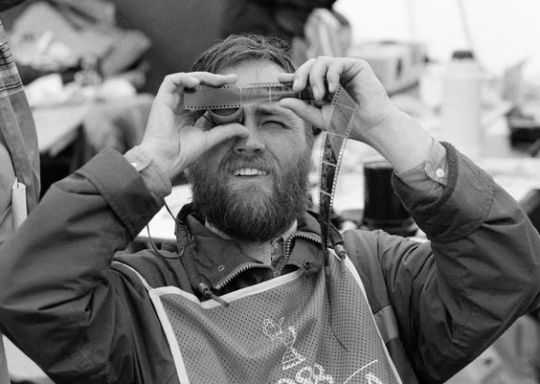
Eamonn McCabe, who has died suddenly aged 74, was a photographer, photo editor, educator and broadcaster, and served as the Guardian’s picture editor for 13 years. And when he wasn’t shooting, editing or talking about images, he was collecting awards for doing so. His work won him picture editor of the year an unprecedented six times and sports photographer of the year four times, creating groundbreaking photographs for the Observer. From his early pictures, such as one of a table tennis player with a very high throw, or an image of Björn Borg’s gimlet eyes on a tennis ball, it was recognised that Eamonn, like Borg, had his own way of perceiving the world. He was bringing something different to sports photography and his trophy cupboard started to fill.
In 1985 he won news photographer of the year for his photographs of the Heysel stadium disaster in Brussels. He was there to cover a football match, but sport was forgotten when the tragic events unfolded. He said that witnessing this horror had a lasting effect on him and perhaps hastened his departure from sports photography. “I went as a sports photographer, thrilled to be covering Juventus against Liverpool, and ended up a news photographer, as the whole thing turned into a terrifying disaster in which 39 supporters were killed … I never processed the films from the game itself. They didn’t seem to be very important.”
Editing pictures became the route out of weekly witnessing English football at its worst, and in 1988 Eamonn was recruited as picture editor of the Guardian by its then editor, Peter Preston, to help the paper see off the new Independent with its well-printed photography. Eamonn’s unique way of seeing and framing the world worked as well behind a desk as behind his cameras. He understood how a news or feature photograph is used and cropped is often as important as its content.
Eamonn was born in Highgate, north London. His father, James McCabe, was a taxi driver and his mother, Celia (nee Henchy), a hotel receptionist. They went on to open a hotel in Manor House opposite Finsbury Park. The young Eamonn grew up among the same postwar streets as another photography great, Don McCullin. At Challoner school in Finchley, it seems he spent most of the time playing football and boxing – he left school with just a couple of O-levels. He started work in a solicitor’s office, then in the accounts department of a brewery, but ledgers and spreadsheets were not for him and he got a job as a junior in an advertising agency. A previous incumbent of his lowly position had been David Bowie.
After a couple of years he got the travel bug, left the ad agency and headed to the capital of flower power in the 60s, San Francisco. He enrolled for a film-making course, but discovered a love for stills photography rather than movies. Eventually he had to leave – with the visa he held, he was in danger of being sent to Vietnam. But first he had a Rolling Stones gig to go to: “Mick Jagger laid on a free Stones concert on 6 December 1969 at the Altamont Speedway, northern California. Three hundred thousand people turned up. I had my cameras and pushed my way upfront to the tiny stage that had been hastily produced. By most accounts, the Hells Angels were hired as security for $500 worth of beer. If Woodstock was the dream, Altamont was the nightmare – the stage was much too low and the Angels didn’t like the sight of nudity and weighed into the crowd with snooker cues. A big guy next to me got the worst of it and I just ran. You don’t argue with the Angels high on beer.”
Returning to the UK, he worked in the photo unit of Imperial College, followed by a job with the London Photo Agency (LPA). He worked in the darkrooms and took pictures at rock concerts. This was a far more exciting world for a 23-year-old. Eamonn said: “The Rolling Stones, the Who, the Beach Boys – they were our heroes. Theirs was the music we listened to anyway ... there was a rawness about them that made good pictures.”
However, in the LPA building, there was another picture agency, Sporting Pictures, where Eamonn got some shifts shooting football matches. He had always been keen on sport, specifically football, and he was a lifelong Tottenham Hotspur fan. Like many sports photographers, if he hadn’t been sent to an event to take pictures, he might well have been there as a fan.
In 1974 Eamonn decided to set up his own picture agency in north London – working for the local papers in the area, but crucially shooting all the home matches of the north London rivals Spurs and Arsenal. He distributed pictures to the national papers. Within a couple of years he landed a contract with the Observer. The paper allowed and encouraged him to develop a style – what became known as “an Eamonn McCabe picture” – a different angle, perhaps away from the peak of the action; a detail; something graphic; a strong use of black and white; a touch of humour. The Guardian’s sports photographer Tom Jenkins said: “Formal shape and a whimsical sense of humour played a large part in McCabe’s sports work, like his picture of the bald Bristol City goalkeeper John Shaw looking like he was about to boot his own head into the centre-circle. Eamonn was always on the lookout for something different.”
According to Jenkins, a picture of the boxer Sylvester Mittee wrapping his hands with bandages before a training session is a prime example of this: “A close-up moment that probably no other photographer at the time would have bothered with.” Eamonn himself explained the choice of lens: “I grabbed a 180mm lens, quite long for indoor work, but it paid off. The effect was to throw everything out of focus except the bandaging and texture of his fingers.”
He documented just about every sport and covered three Olympic Games. And he photographed the wedding of Prince Charles and Lady Diana Spencer – as a sports photographer he was able to capture the kiss on the palace balcony with his long cricket lens.
The peerless sports journalist Hugh McIlvanney wrote of being Eamonn’s colleague at the Observer in a foreword to his first book, Sports Photographer (1982): “Working with Eamonn McCabe can be hazardous to a reporter’s ego. His photographs often convey the essence of an event or a performer with such dramatic succinctness that the writer assigned to the same job is left with the feeling of having turned in a 1,500-word caption.”
As well as shooting sport, Eamonn also played for an amateur team, the Nine Elms Dynamos: “One morning, when we were getting a real spanking,” he wrote, “a long-haired centre forward scored yet another goal and ran back past me as I was lying face down in the mud: ‘You didn’t get a picture of that one, did you?’”
After Heysel, Eamonn was offered his first picture-editing job, on a new magazine, Sportsweek. It seemed a perfect journal for the move from shooting to editing photography. Unfortunately, the proprietor was Robert Maxwell. It was a good product with great photography, edited by Eamonn, but it lost money and Maxwell soon tired of the losses. The Guardian needed a new picture editor. Perhaps an award-winning sports photographer with very little editing experience might not have been everyone’s choice, but Preston knew it could work.
Paul Johnson, until recently deputy editor of the Guardian, said that Eamonn “transformed the look and feel of the newspaper almost overnight. Some senior colleagues felt the photographs were just too big and were squeezing out words, until gently reminded, with a smile, that no reader had ever complained about the lack of words in the Guardian (the wrong words, yes, all the time, but not lack of them).”
Eamonn recruited new photographers and ensured that photography was not an afterthought. He got his picture choice printed on 20in x 16in paper by the Guardian darkroom and argued hard for his selection in news meetings. Johnson said: “Eamonn had a compelling visual literacy but also warmth and charisma. People loved working for him, people loved working with him.”
Eamonn was in his element as the Guardian covered the big news events that seemed to come with increasing frequency at the time – the downing of the Pan Am plane over Lockerbie, the Clapham rail crash, the fall of the Berlin Wall, the death of Diana, Princess of Wales.
In 2001 Eamonn decided to “go back on the road”. He had a need to create his own images. He stayed on at the Guardian, but this time shooting something a bit quieter: portraits. He photographed many notable people, from Tony Blair to Iris Murdoch, Lou Reed to Desmond Tutu. The Guardian feature writer Simon Hattenstone said: “Eamonn was astonishingly quick, he never panicked, and he was fantastically unobtrusive. Often the photo was done before the subjects had time to smile or stiffen up.” He favoured a direct approach with his portraits. He liked his subjects to confront his camera and, by extension, the viewer.
Many of these photographs are in the National Portrait Gallery collection. He also photographed artists and their studios for the Guardian and the Royal Academy magazine, including Frank Auerbach, Grayson Perry, Bridget Riley, Howard Hodgkin and Maggi Hambling.
Eamonn was keen to pass on his knowledge and inspire others. A steady stream of hopefuls brought portfolios to his desk, where he dispensed advice and encouragement. His educational work extended to TV programmes such as Britain in Focus (2017) for the BBC. He was often chosen by the broadcast media as a photo pundit – he was recently interviewed about imagery of Queen Elizabeth – and his relaxed manner and thorough knowledge made him a natural on TV or radio. He published six books – the last one, on aerial photography, demonstrates the breadth of his photographic knowledge.
As well as honorary professorships at Thames Valley (Preston responded to the appointment by nicknaming him “Prof”) and Staffordshire universities, Eamonn was visiting senior fellow in photography at the University of Suffolk and held an honorary doctorate from the University of East Anglia.
He moved to Suffolk a few years ago and immediately got involved with photography in the county. He taught at the university in Ipswich and when PhotoEast – the Ipswich-based photo festival – was founded, Eamonn was asked if he would become the patron. He agreed without question.
Eamonn was always a dapper dresser and, once he had left his sports photographer’s waterproofs behind, his tweed coat and jaunty hats looked the part in the small town of Saxmundham where he lived. Although he was a Londoner who enjoyed the pubs, jazz clubs and art galleries of the city, life in the country gave him land- and seascapes to photograph and a vegetable garden to tend. He swapped soccer for golf – he played a round two days before he died.
On hearing the news of his death, Eamonn’s erstwhile neighbour McCullin said: “McCabe was like all great photographers – he never stopped working. Like most of us, his life was photography.” The answer to which is one of Eamonn’s favourite sayings, “It’s better than working, Rog”.
In July 1997 Eamonn asked Rebecca Smithers, a Guardian journalist, to marry him while they were on a press trip to New York – they were married at City Hall a couple of days later. He is survived by Rebecca and their daughter, Mabel; by Ben, his son from a previous marriage, to Ruth Calvert, that ended in divorce; and by Marian, his sister.
Alan Rusbridger writes: The email from Eamonn McCabe popped into my inbox just after breakfast one day in the spring of 2009. “What is it with X [here was the name of an internationally acclaimed fashion photographer whose work had been featured in that day’s Guardian]? I don’t get it. That photograph (?) of Y [here was the name of the subject in the offending portrait] has to be one of the worst we have ever printed ... I spent years trying to get that sort of crap out of the pages. What next, handshakes and big cheques?”
I revisited the image this week. It was, indeed, sensationally bad – poorly lit, awkward shadows, overexposed, lazily composed, clumsily cropped and barely in focus.
I don’t think Eamonn was bitter about the prices his fellow lensman could command (upwards of £40k for a plate). More likely, he felt puzzled – and, on behalf of press photographers the world over, a bit insulted. As a former picture editor, he knew that a dozen or more staff or freelance photographers – none of them remotely household names – would have come up with a better photograph given five minutes and a bare wall.
Eamonn was a press photographer to his fingertips. As a sports photographer on the Observer, he had lightning reactions and an instinctive eye for composition. Even if you didn’t know the name, you’d recognise many of the iconic images from his years on the touchline.
The former Times writer, Simon Barnes, wrote of his images: “People in sports journalism talk about an ‘Eamonn McCabe shot’ even when McCabe did not take the picture. They are talking about a style, a vision, a way of looking at sport.”
It was an inspired move when my predecessor as editor of the Guardian, Peter Preston, hired Eamonn to be picture editor in 1988 – the time of a crucial redesign. The paper had always employed distinguished staff photographers, but they were often let down by the quality of printing and by lacklustre design. Eamonn did, indeed, ban the “crap” – especially the cliched picture that told you nothing. He favoured the bold, the unexpected – images that not only caught your eye but lingered in the mind. He was encouraging to young photographers; always approachable … and always up for a pint or two at the end of his shift.
He was a late convert to the power of colour – once railing against the distracting glare of hi-vis jackets in an image of rescue workers at a train crash. But, in time, he came to accept the inevitable.
And then, remarkably, he had a third career (via a flirtation with landscape) as a portrait photographer, usually illustrating the culture pages’ profile of distinguished writers, artists and musicians. Unlike some internationally acclaimed photographers he could mention, he might only be given a few minutes and inadequate light in which to bag his shot. Nine times out of 10 he memorably and sensitively captured his subject.
It’s difficult to think of a comparable figure in photography – one who successfully crossed genres and who also had a spell generously editing the work of his peers. He was also one of the warmest and most collaborative figures in Fleet Street.
“Journalists are far too bashful to refer to any of their newspaper work as ‘art’,” wrote Barnes in an introduction to Eamonn’s work in 1987. Hence, perhaps, Eamonn’s snort of derision for the picture in the Guardian back in 2009. But Eamonn was truly a kind of artist, as well as an unpretentious pressman. He was a very rare thing.
🔔 Eamonn McCabe, photographer, born 28 July 1948; died 2 October 2022
📷 Photo above: Eamonn McCabe looking at his negatives in the press room during the 1988 British Open Golf Championships in Lytham St Annes.
Daily inspiration. Discover more photos at http://justforbooks.tumblr.com
10 notes
·
View notes
Photo

This is a shot of two skyscrapers. 50 California, (completed in 1972), is reflected in the facade of 101 California, (completed in 1982).In 1993, a mass murder occurred at 101 California Street.
A disgruntled client of the law firm Pettit & Martin entered their offices on the 34th floor and killed eight people and wounded six before killing himself.
The event was a catalyst in the passage of the Violent Crime Control and Law Enforcement Act of 1994, a drive initiated by California Senator Dianne Feinstein to ban assault weapons.
Source - San Francisco Obscura — Photography by Jon Rendell.
6 notes
·
View notes